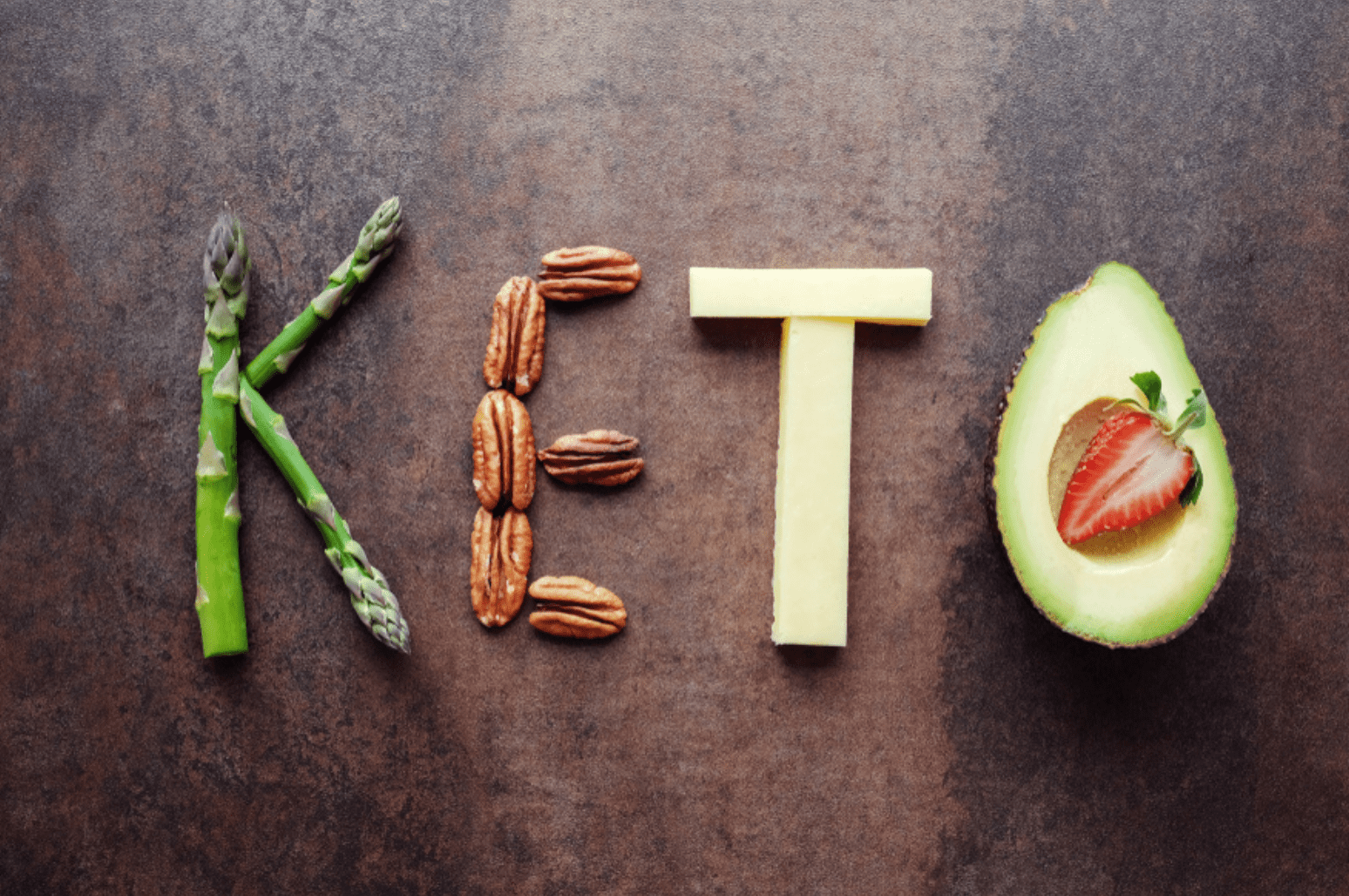
Grains are used worldwide to conjure up some of the most famous and delicious dishes. Some grains or all grains are off-limits on many keto and low-carb diets. Unless you’re following a paleo keto-style diet where you avoid grains, you might be wondering whether you can incorporate grains into your ketogenic diet. Let’s discuss the ins and outs of grains on keto!!
Simple and Complex Carbs
Foods high in fiber have a lower number of net carbs. Net carbs are the carbs your body actually absorbs. To calculate net carbs, subtract the grams of fiber from the total grams of carbs. [1]
(Total grams of carbs – grams of fiber = net carbs)
Some grains are lower in carbs and higher in fiber, while others are higher in carbs and should definitely be avoided on keto.
Carbohydrates are categorized into simple and complex. [2]
Starch and fiber are complex carbs, and sugar is a simple carb. To simplify: fiber is a type of carb, but you can’t digest it; rather, it feeds the healthy bacteria in your gut. Starch is more like long chains of sugar molecules connected together (envision a sugary pearl necklace), and your body breaks starch down into individual sugar pearls or units. [3]
Simple Carbs

Simple carbohydrates have one or two sugar molecules. Fructose (the fruit sugar) or glucose have one sugar molecule, whereas disaccharides like lactose (the milk sugar) and sucrose (table sugar) are made up of two. [4]
Simple carbs come from added sugars like white and brown sugar and honey and from naturally occurring sugars found in milk and fruits. Refined grains and foods like white rice and white flour have been stripped of most of their nutrients and contain mostly sugar rather than starch or fiber, leading to a high blood sugar spike that would kick you out of ketosis. These simple carbs are absorbed into the bloodstream almost immediately. [5]
Complex Carbs
Complex carbs (polysaccharides or oligosaccharides) have three or more sugar molecules. Compared to simple carbs, complex carbs are more slowly absorbed into your bloodstream.
Examples of complex carbs include:
- Potatoes
- Corn
- Parsnips and starchier veggies
- Legumes and beans like chickpeas and kidney beans
- Whole grains like bread, breakfast cereal, rice, and quinoa
What About Low-Carb Grains?
Some keto professionals and advocates believe grains, in general, aren’t suitable for a ketogenic diet. In contrast, others say it depends on the grain, how often you eat it, and the person. People who are more fat-adapted may be able to remain in ketosis while consuming some grains. Fat adaptation means your body is metabolically equipped to handle digesting fat instead of carbs and smoothly switching between the two fuels.
You need to assess the net carb count of low-carb grains instead of the total grams of carbs to determine whether you should include low-carb grains in your diet. In smaller amounts, you might be able to have some lower-carb grains and stay in ketosis.
Since fiber doesn’t affect your blood sugar levels, you want to go for grains that have some fiber and are lower in carbs.
For example:
Bulgur
Bulgur is a cereal grain typically derived from cracked wheat berries and used in dishes like tabbouleh and porridge. 1 cup (182 grams) of cooked bulgur has 25.5 grams of net carbs, making it one of the lowest carb whole grains around. [6]
Millet
Millet is an ancient grain, and 1 cup (174 grams) of cooked millet provides 39 grams of net carbs and over 2 grams of fiber. [7]
Quinoa
Quinoa is a pseudo-grain often prepared and served as a grain. 1 cup (185 grams) of cooked quinoa provides 34 grams of net carbs, so it may not be suitable for many keto dieters. [8] [9]
Couscous
Couscous is a processed grain product and a Moroccan staple dish. 1 cup (157 grams) of cooked couscous provides around 34.5 grams of net carbs. [10]
Popcorn
You might be surprised to think of popcorn as a grain, never mind a lower-carb grain, but a 1 cup (14 grams) serving of popped popcorn actually only has 6.5 grams of net carbs. Check the label to make sure there aren’t any added sugars and, ideally, opt for air-popped popcorn. Keep in mind popcorn may not be the healthiest snack choice as it usually comes along with trans fats and artificial ingredients. [11]
Wild Rice
Wild rice comes from specific grasses in the Zizania genus of plants. Wild rice isn’t related to true rice (oryza sativa). 1 cup (164 grams) of cooked wild rice provides 32 grams of net carbs. [12]
Ezekiel bread is a sprouted ancient grain bread containing organic grains and legumes, including soybeans, lentils, millet, wheat, and barley. Some people might be able to incorporate one slice of Ezekiel bread on keto. [13]
Off-Limits High Carb Grains
Grains that are less processed and refined also usually have a lower carb content. Some grains and refined grain-based products have a much higher carb count and are lower in fiber, making them off-limits on keto, such as:
- White bread
- Refined pasta
- White rice
- Grain-based breakfast cereal
- Pizza dough
- Instant oatmeal
- Wheat flour muffins and cakes
- Crackers
Adding Grains to a Keto Diet
The easiest and best way to determine if a little portion of carbs will kick you out of ketosis is by testing your ketone levels. People are different, and you might be sensitive to certain types of carbs, while others have little to no effect.
Generally speaking, if you are certain that grains are suitable for your health and results, choose unprocessed, unrefined, and lower carb whole grains like wild rice, popcorn, and bulgur.
Those on a therapeutic ketogenic diet of less than 25-30 grams of carbs daily may choose to avoid all grains, while those following a more standard ketogenic diet may decide to consume smaller amounts of lower carb grains. And others eliminate grains altogether out of concern for detrimental ingredients and possibly adverse effects on the microbiome.

If you want to expand your palette or adopt a more paleo approach, you can use keto-compliant whole-grain alternatives like almond flour and coconut flour.
Read our article for info on ideal grain substitutes for your favorite grain-based foods like noodles, pasta, cereal, and bread. Use lettuce wraps or make keto burger buns with coconut flour. Taste spaghetti squash or shirataki noodles or make cauliflower rice or pizza. You don’t have to miss out if you’re both keto and grain-free! Check out our recipes section for lots of grain-free, low-carb cooking ideas to replace your preferred comfort foods and crush cravings.
References
Wylie-Rosett, J., Aebersold, K., Conlon, B., Isasi, C. R., & Ostrovsky, N. W. (2013). Health effects of low-carbohydrate diets: Where should new research go? Curr Diab Rep, 13(2), 271-278. DOI: 10.1007/s11892-012-0357-5
National Institute on Aging. Healthy Eating: Important Nutrients to Know: Proteins, Carbohydrates, and Fats. Important Nutrients to Know: Proteins, Carbohydrates, and Fats | National Institute on Aging (nih.gov)
Mayo Clinic. How Carbs Fit into a Healthy Diet. Carbohydrates: How carbs fit into a healthy diet - Mayo Clinic
Slavin, J., Carlson, J. (2014). Carbohydrates. Adv Nutr, 5(6), 760-761. DOI: 10.3945/an.114.006163
The Global Diabetes Community (Diabetes.co.uk). Simple Vs Complex Carbohydrates: Difference Between Simple Sugars and Starches. Simple vs Complex Carbohydrates - Difference Between Simple Sugars and Starches (diabetes.co.uk)
United States Department of Agriculture. Bulgur, Cooked. FoodData Central (usda.gov)
United States Department of Agriculture. Millet, Cooked. FoodData Central (usda.gov)
Angeli, V., Silva, P. M., Massuela, D. C., Khan, M. W., Hamar, A., Khajehei, F., Graeff-Honninger, S., & Piatti, C. (2020). Quinoa (Chenopodium quinoa Willd.): An Overview of the Potentials of the “Golden Grain” and Socio-Economic and Environmental Aspects of Its Cultivation and Marketization. Foods, 9(2), 216. DOI: 10.3390/foods9020216
United States Department of Agriculture. Quinoa, Cooked. FoodData Central (usda.gov)
United States Department of Agriculture. Couscous, Cooked. FoodData Central (usda.gov)
United States Department of Agriculture. Popcorn, NFS. FoodData Central (usda.gov)
United States Department of Agriculture. Wild Rice, Cooked. FoodData Central (usda.gov)
Food For Life. Ezekiel Sprouted Whole Grain Bread. Ezekiel 4:9 Sprouted Whole Grain Bread










